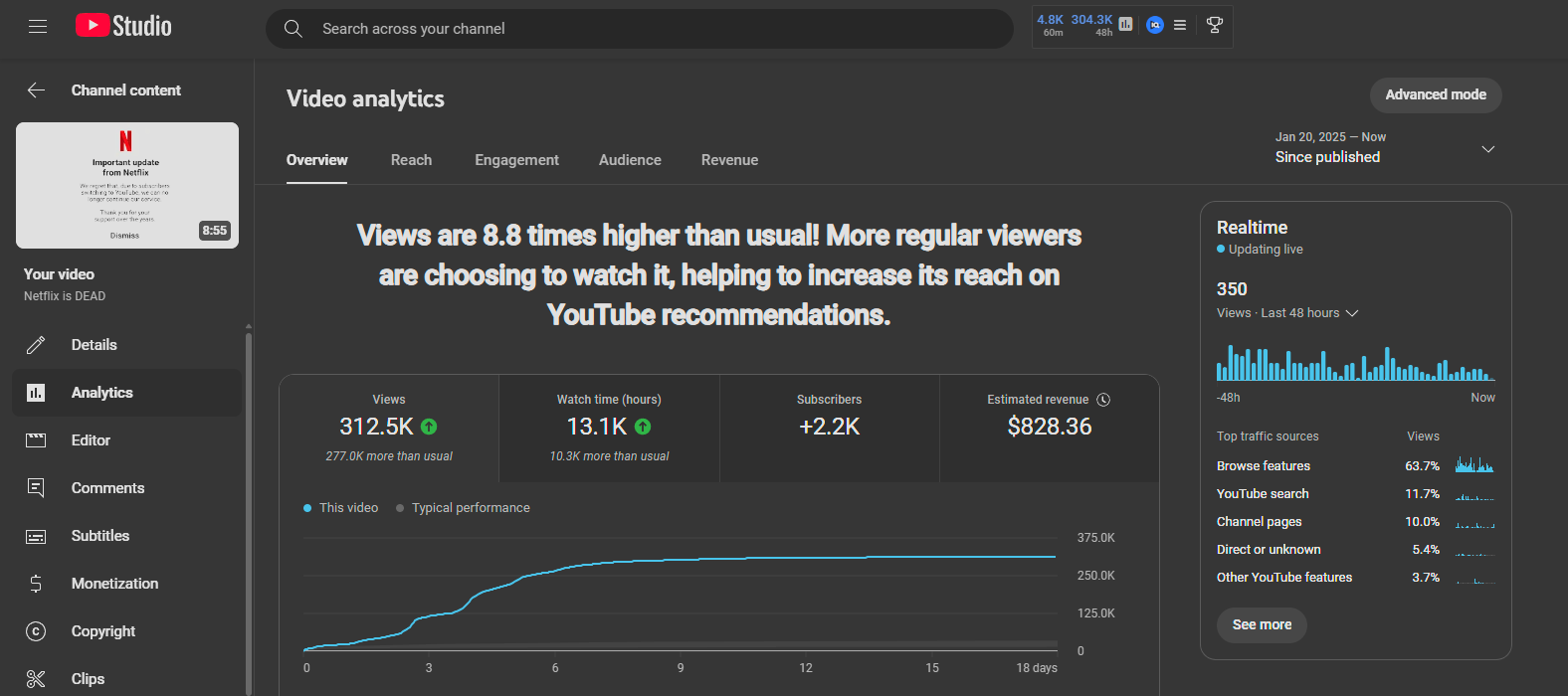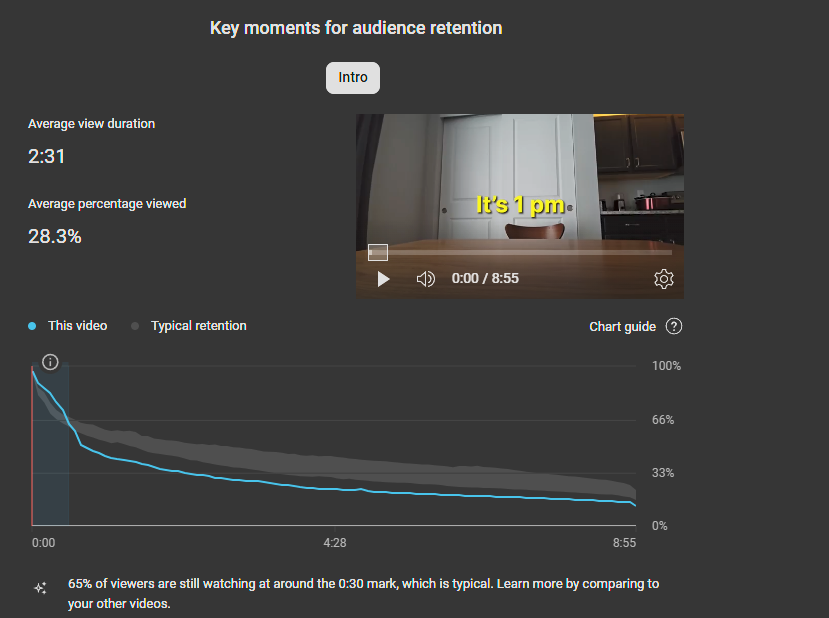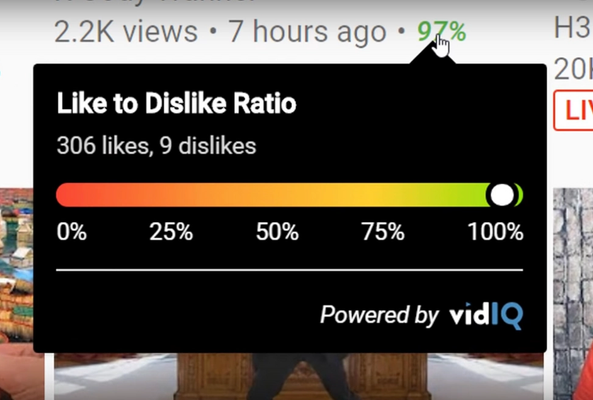In addition to being an avid movie and gaming enthusiast, Uttaran Samaddar is an experienced writer who has lent his creativity and unique perspective to various publications. He loves hearing and telling stories.
Understanding YouTube Average View Duration
YouTube Average View Duration (AVD) is one of the most crucial metrics to monitor for any YouTube creator serious about growing their channel. It is one of the most misunderstood yet influential figures in YouTube analytics. Many creators misinterpret AVD, leading to incorrect assumptions about audience engagement and video performance.
In this excerpt from our podcast, Travis and Jenn break down what Average View Duration really means, how it impacts content strategy, and why analyzing retention graphs is essential, and why a deeper analysis of what is a good average view duration on YouTube matters for long-term success.
Read More: How to Get Subscriber Feedback from a YouTube Analytics Deep Dive
Stop Guessing. Start Growing.
Join 20M+ creators using vidIQ to get more views, subscribers, and success on YouTube.
Let’s dive into the world of YouTube analytics and retention strategies.
What is YouTube Average View Duration?
Average View Duration represents the average time viewers spend watching a video. Mathematically, YouTube Average View Duration (AVD) is calculated as follows:
Average View Duration= Total Watch Time / Total Number of Views
However, it’s important to remember that AVD does not mean every viewer watched for that exact duration. Some may have watched the full video, while others left after just a few seconds.
Example:
Imagine you upload a 10-minute video that gets 10 views:
- 5 viewers watch the entire video (10 minutes each).
- 5 viewers drop off after only 2 minutes each.
- Total watch time = (5 × 10) + (5 × 2) = 60 minutes.
- AVD = 60 minutes ÷ 10 views = 6 minutes.
This does not mean every viewer watched for 6 minutes—some watched till the end, while others dropped off early. On the YouTube Creator Studio, you can find this number expressed in different ways.
From the Advanced Mode in Analytics, you can filter Average view duration in reference to Content on your channel

You can also view average view duration for a specific video. Click on the Analytics tab on a given video in YouTube Studio

Scroll down a little bit and you can see the average view duration for the video

Many creators think of Average View Duration (AVD) as a median value and that causes all the confusion. So, let's clear this up conceptually.
- Average View Duration (AVD): Affected by outliers. If some viewers leave after a few seconds, the AVD drops.
- Median Views: Represents the middle value—half of the audience watched longer than this duration, and half watched less.
For example, if your AVD is 6 minutes, but your median view duration is 8 minutes, it means most of your audience stayed for longer than 6 minutes, and a few people leaving early dragged the average down. Thus, relying only on AVD without analyzing retention graphs can be misleading.
How New vs. Returning Viewers Affect AVD
A key factor that influences AVD is whether a viewer is new or a returning subscriber. It's understandable that subscribers tend to watch longer because they are already familiar with your content.
New viewers, on the other hand, may leave earlier if they are unsure about the creator or the topic. By checking Watch Time Analytics, you can compare AVD for subscribers vs. non-subscribers and adjust your content strategy accordingly.

If your non-subscribers have a significantly lower AVD, you may need a stronger video hook to keep them engaged. And, if your subscribers watch longer, focus on encouraging more subscriptions to improve overall retention.
Since AVD is an average, it should not be the only metric to evaluate viewer retention. Instead, creators should combine this metric with retention graphs to get a clearer picture.
Read More: Why Subscribers Aren't Watching Your YouTube Videos (And How to Fix It)
Best Practices for Analyzing AVD:
- Examine the Retention Graph: See where viewers drop off.
- Identify Replay or Spikes: If a section has high replays, it means viewers found that part engaging.
- Compare Against Video Length: If your AVD is 5 minutes, making a 7-minute video may work better than cutting content too short.
A YouTuber tested retention by asking viewers a question at the end of the video:
"Do you prefer crunchy or smooth peanut butter?"
Surprisingly, many viewers answered in the comments—proving that AVD alone did not reflect full retention. Some users skipped ahead but still engaged with the content.
How Long Should a YouTube Video Be?
A common misconception is that your video length should match your AVD. This is not true.
If your AVD is 5 minutes, making a 5-minute video does not guarantee that every viewer will watch the entire thing.
A 7- to 10-minute video might be optimum YouTube video length because even if viewers don’t finish it, they may stay engaged longer than your current AVD. The best YouTube video length is one that keeps viewers engaged while maximizing watch time.
- Content Type: Tutorials, vlogs, and reviews often have longer AVD than entertainment clips.
- Audience Retention Patterns: If your audience stays for an average of 7 minutes, experiment with slightly longer videos.
- YouTube Algorithm Preference: Longer watch time contributes to YouTube’s ranking signals, making your video more likely to be recommended.
What is a Good Average Percentage Viewed on YouTube?
Essentially, Average View Duration expressed as a percentage is represented as follows:
- APV (%) = (AVD ÷ Total Video Length) × 100
This metric tells how much of your video, on average, was watched in terms of a percentage.
What’s a Good APV?
- 50% - 60% → Good
- 60% - 70% → Very Good
- 70%+ → Excellent
For example:
A 10-minute video with an AVD of 6 minutes has an APV of 60%, which is above average.
If APV is below 50%, it suggests viewers lose interest too quickly—you may need better pacing, editing, or storytelling.
How to Improve APV:
In order to improve the average, you need to focus on the total time watched on your content. Therefore, watch time is an important metric to monitor.
- Improve the First 30 Seconds: Hook viewers immediately.
- Avoid Slow Intros: Get straight to the value.
- Use Pattern Interrupts: Change visuals or storytelling style to keep viewers engaged.
Read More: How to Increase Audience Retention on Every YouTube Video
Key Takeaways from YouTube AVD Analysis
✅ AVD is an average, meaning some viewers watch more and some less.
✅ Retention graphs provide a clearer picture of when and why viewers leave.
✅ Subscribers watch longer, so increasing subscriptions can boost AVD.
✅ A slightly longer video (7+ minutes) can optimize retention compared to shorter ones.
✅ Engagement tests (comment prompts, polls) help confirm actual viewership.
✅ A good APV (50%+) indicates strong retention.
So, the next time you check your YouTube Average View Duration, remember: It’s not about getting the highest number—it’s about understanding why people stay and why they leave. When you start analyzing your retention graphs strategically, you’ll unlock powerful insights to boost watch time, improve content quality, and grow your YouTube success.
Now, go optimize your next video and keep your audience watching longer!
20k+ 5 Star Reviews
Ready to put this into action?
Use vidIQ to find your next video idea, pick better keywords, and optimize every upload.






